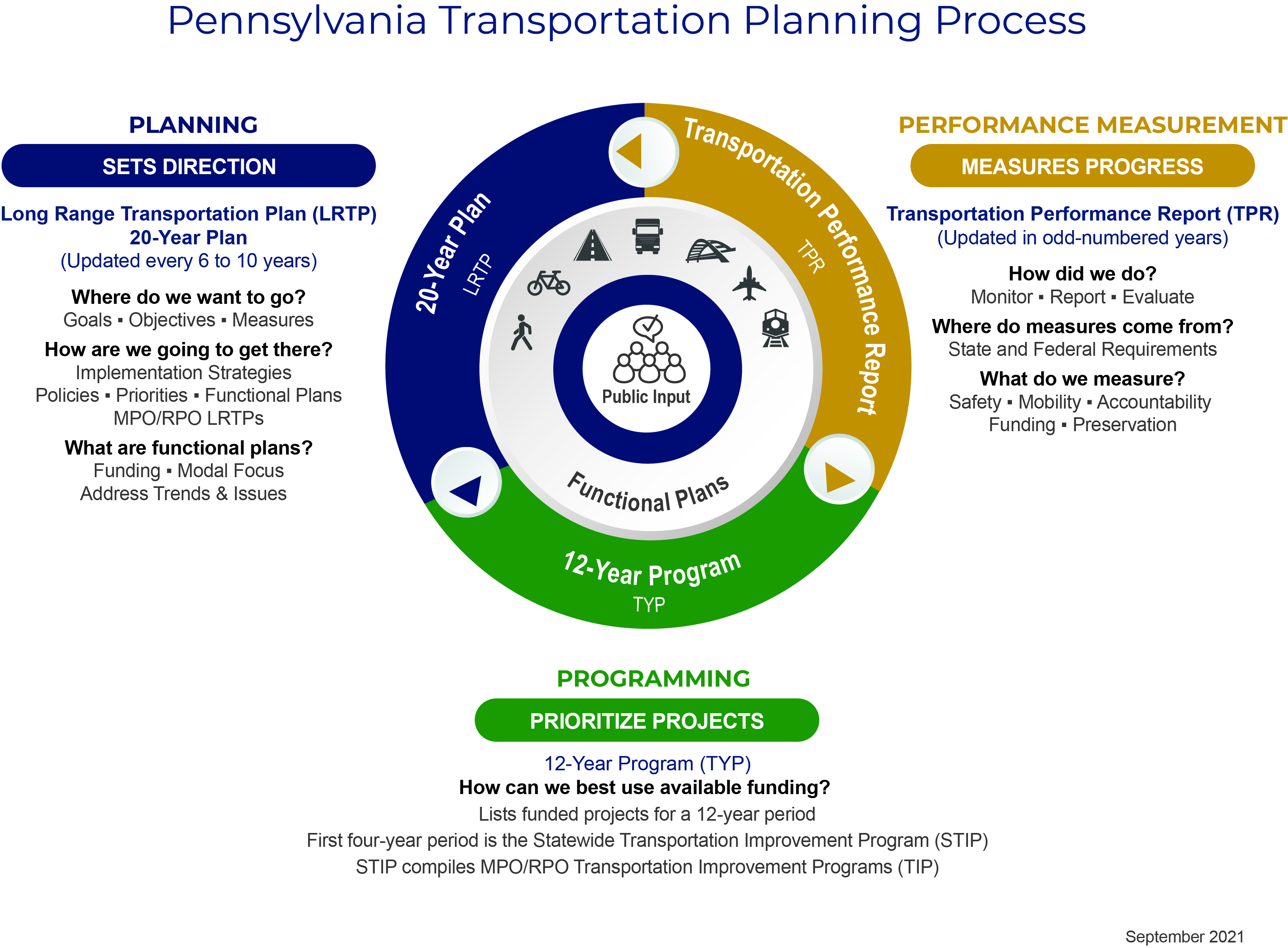Long-Range Transportation Plan
The Pennsylvania Department of Transportation (PennDOT) leads the development of the statewide Long-Range Transportation Plan (LRTP) that looks ahead 20 years and establishes multimodal strategic directions for Pennsylvania's transportation network. The planning team reviews current and future transportation trends along with national planning factors established by federal funding laws.
How is the Plan Used?
The final goals and objectives guide state and regional planning and project programming processes such as:
-
PennDOT's 12-Year Program (TYP), which includes a fiscally constrained list of funded projects that will be delivered over the next 12 years; and
- Metropolitan and Rural Planning Organization LRTPs, which also cover a 20-year planning horizon.
Successful implementation is tracked through the biennial
Transportation Performance Report, which measures progress on the state of the multimodal transportation system.
Plan Implementation
PennDOT is responsible for advancing the plan's goals and objectives. A short-term action plan has been developed to track implementation and establish a systemic approach to the reporting, follow-through, and communications of the final plans.
Public and stakeholder outreach continues to play a key role in the plans' implementation. Public feedback on the implementation process will be requested on a recurring basis through the State Transportation Commission's biennial survey and reported on in conjunction with the development of the Transportation Performance Report. For details about future public outreach opportunities go to the PennDOT Planning webpage or sign up to receive our newsletters penndotplanning@pa.gov.
Pennsylvania Transportation Planning Process
 Click to view infographic in PDF format.
Click to view infographic in PDF format.
-
Planning Phase: Sets direction and includes the 20-year Long-Range Transportation Plan (LRTP) that is updated every six to 10 years.
-
Common questions and focal points:
- Where do we want to go? Goals, objectives, measures
- How are we going to get there? Implementation strategies, policies, priorities, functional plans, MPO/RPO LRTPs
- What are functional plans? Funding, modal focus, address trends and issues
-
Programming Phase: Prioritizes projects and includes the 12-Year Program (TYP)
-
Common questions and focal points:
- How can we best use available funding?
- List funded projects for a 12-year period
- First four-year period is the Statewide Transportation Improvement Program (STIP)
- STIP compiles MPO/RPO Transportation Improvement Programs (TIP)
-
Performance Measurement Phase: Measures progress and includes the Transportation Performance Report (TPR), which is updated in odd-numbered years
-
Common questions and focal points:
- How did we do? Monitor, report, evaluate
- Where do measures come from? State and Federal Requirements
- What do we measure? Safety, mobility, accountability, funding, preservation
With the help of public input, all phases lead to functional plans in each transportation sector: pedestrian and bike, highway and bridge, railway and freight, and aviation.